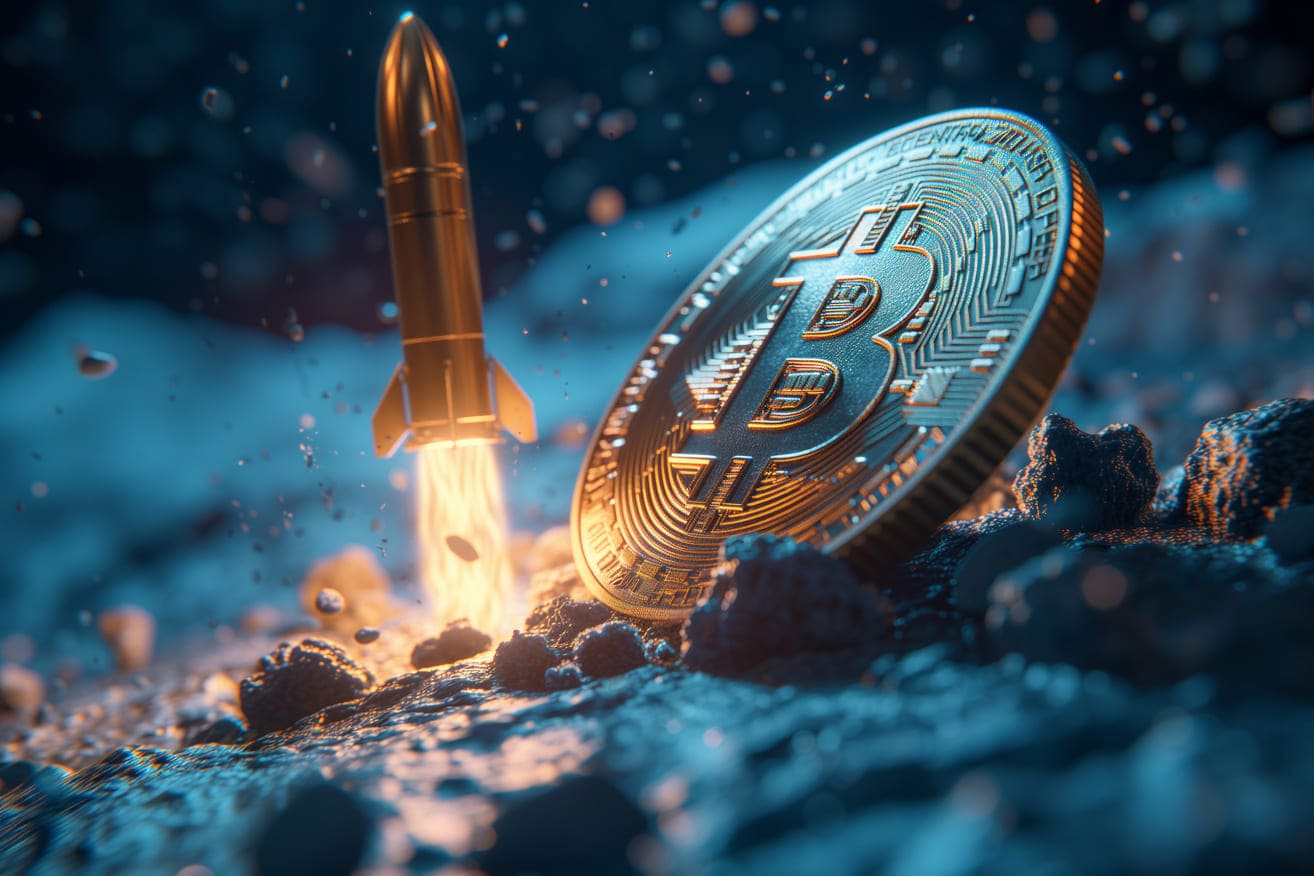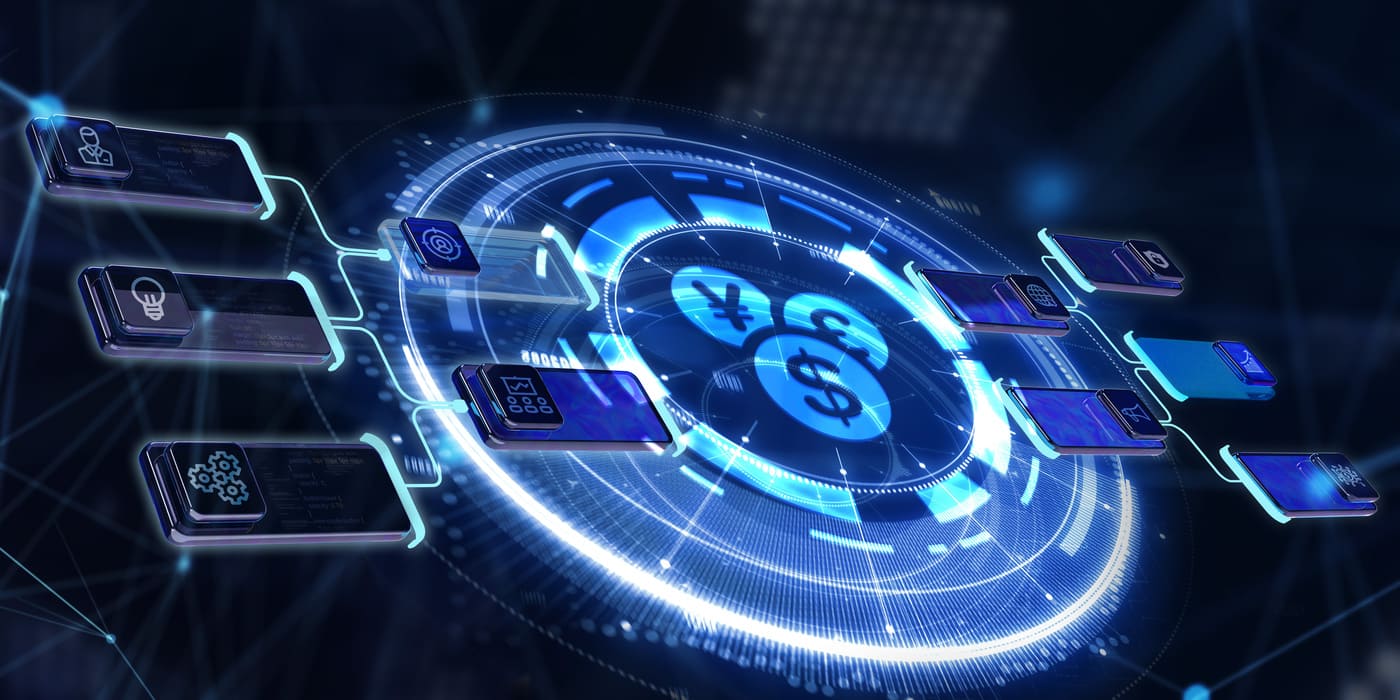The Evolution of ASIC Mining in the Cryptocurrency Industry

Introduction
Since the creation of Bitcoin in 2009, cryptocurrency mining has made significant progress. In the early days, mining Bitcoin was an exciting adventure into a new technology, and anyone with a computer could participate.
However, as Bitcoin became more popular, the process of mining became more complex and now blockchain mining has grown to become a multibillion-dollar industry. This led to the creation of specialized hardware for mining Bitcoin, known as Application-Specific Integrated Circuit miners (ASICs).
What is ASIC mining?
ASICs (Application Specific Integrated Circuits) are specialized hardware devices designed and optimized for the sole purpose of mining cryptocurrencies that are created through proof of work.
Unlike general-purpose computers or graphics cards, ASIC miners can only perform a single function – to solve specific cryptographic algorithm co and verify transactions on a blockchain network – but they do it much faster, more efficient and with low power consumption than general-purpose hardware like GPUs (Graphics Processing Units) or CPUs (Central Processing Units).
ASIC mining is mainly used for cryptocurrencies that use proof-of-work (PoW) as their consensus mechanism, such as Bitcoin, Litecoin, Ethereum and others. PoW requires miners to compete with each other to find a valid hash that satisfies a certain difficulty level. The first miner who finds such a hash gets rewarded with newly created coins and transaction fees. The difficulty level adjusts periodically to maintain a steady rate of block production.
ASIC miners were introduced in 2013 and were designed specifically for mining Bitcoin. They were much more efficient than the CPUs and GPUs that were initially used for mining, so that the introduction of ASIC miners marked a significant turning point in the history of Bitcoin mining, as it signaled the start of an arms race among miners to acquire the most powerful and efficient mining hardware.
The advent of ASIC mining had a profound impact on the Bitcoin network. It increased the network’s total hashing power, making it more secure against attacks. However, it also led to a significant increase in the network’s difficulty level, making it harder for individual miners to earn Bitcoin. This led to the emergence of mining pools, where miners combine their hashing power to increase their chances of earning Bitcoin.
ASIC miners have now become the go-to choice due to their superior speed and efficiency in performing calculations. Despite their popularity, there are challenges associated with using ASICs for mining. The high cost of the machines and their substantial energy consumption can be significant obstacles for many miners.
How does ASIC mining work?
ASIC mining works by connecting an ASIC device to a power source and a network that supports the cryptocurrency being mined. The ASIC device then runs a software program that communicates with the network and receives instructions on which hashes to compute. A hash is a mathematical function that transforms any input data into a fixed-length output. The goal of mining is to find a hash that meets certain criteria, such as having a certain number of leading zeros. This is called proof-of-work, and it proves that the miner has expended computational resources to secure the network.
When an ASIC miner finds a valid hash, it broadcasts it to the network and claims a reward, usually in the form of newly minted coins and transaction fees. The network then verifies the hash and adds it to the blockchain, which is a public ledger of all transactions that have ever occurred on the network. The blockchain serves as a source of truth and consensus for the network.
Due to their ability to process large amounts of data at high speeds, ASIC miners have become a popular and efficient method for mining cryptocurrencies as these devices are equipped with specialized components that are designed for specific tasks, making them highly efficient and high-performing.
ASIC mining vs GPU mining
ASIC mining and GPU mining are two different ways of mining cryptocurrencies, and they have their own advantages and disadvantages. Some of the main differences are:
- Speed and efficiency - ASICs are much faster and more energy-efficient than GPUs, as they can perform more hashes per second with less power consumption. For example, according to Bitpro, an Antminer S19 Pro ASIC can produce 110 TH/s (tera hashes per second) with 3250 W of power, while a Radeon RX 5700 XT GPU can produce 51 MH/s (mega hashes per second) with 225 W of power. This means that an ASIC can produce about 2158 times more hashes than a GPU with about 14 times more power.
- Cost and profitability - ASICs are more expensive than GPUs, as they require higher initial capital and maintenance costs. For example, according to Minery, an Antminer S19 Pro costs about $10,000, while a Radeon RX 5700 XT costs about $500. However, ASICs are also more profitable than GPUs, as they can generate more revenue with lower operating costs. For example, according to WhatToMine, an Antminer S19 Pro can earn about $28 per day in Bitcoin mining, while a Radeon RX 5700 XT can earn about $3 per day in Ethereum mining (as of October 2022).
- Flexibility and versatility - GPUs are more flexible and versatile than ASICs, as they can mine different cryptocurrencies that use different algorithms. For example, a GPU can mine Ethereum (Ethash), Monero (RandomX), Zcash (Equihash), etc., while an ASIC can only uses one algorithm, means technically they could mine any coin that’s based on the same algorithm. For example, an Antminer S19 Pro can only mine Bitcoin (SHA-256), while an Innosilicon A10 Pro can only mine Ethereum (Ethash). This means that GPUs can switch to more profitable coins or algorithms when the market conditions change, while ASICs are stuck with one coin or algorithm.
- Availability and accessibility - GPUs are more available and accessible than ASICs, as they are widely used for gaming, video editing, machine learning, etc., and can be easily purchased from online or offline retailers. ASICs are more scarce and exclusive than GPUs, as they are produced by a few manufacturers in limited quantities and often sold out quickly or pre-ordered by large-scale miners or resellers. This means that GPUs are easier to obtain and use for small-scale or hobbyist miners, while ASICs are harder to acquire and use for large-scale or professional miners.
Pros & Cons of ASIC mining
ASIC mining has several advantages and disadvantages compared to other forms of mining.
On the positive side, ASIC miners are more profitable, secure and stable than other devices. They can generate more hashes per second and consume less electricity, which lowers the operational costs and increases the return on investment. They also make the network more secure by increasing the hashing power and making it harder for attackers to launch a 51% attack.
On the negative side, ASIC miners are more expensive, centralized and inflexible than other devices. They have a high upfront cost and a short lifespan due to the constant innovation and competition in the industry. They also create a barrier to entry for new miners and reduce the decentralization and diversity of the network. They cannot be used for anything else besides mining, which limits their utility and resale value.
The Opportunities of ASIC Mining
ASIC mining offers many opportunities for innovation and growth. Some of the areas where ASIC mining can benefit from are:
- The adoption of alternative chip technologies - As silicon-based chips reach their limits, new chip technologies may emerge that can offer better performance and efficiency for ASIC mining. For example, some researchers are exploring the use of carbon nanotubes, graphene, or quantum dots for chip design.
- The integration of artificial intelligence (AI) and machine learning (ML) in mining - AI and ML can help optimize various aspects of ASIC mining, such as power consumption, cooling, maintenance, and security. For instance, some miners are using AI to monitor their hardware and detect anomalies or faults before they cause damage or downtime.
- The diversification of mining applications - ASIC mining is not limited to Bitcoin or other cryptocurrencies. It can also be used for other purposes that require high-performance computing, such as scientific research, data analysis, or gaming. For example, some miners are renting out their excess computing power to cloud computing platforms or distributed computing projects.
The Challenges of ASIC Mining
ASIC mining is not without its challenges. As the difficulty of mining increases, so does the need for more powerful and efficient hardware. However, there are several factors that limit the potential of ASIC mining, such as:
- The physical limits of silicon-based chip technology - As chip technology advances, it becomes harder and more expensive to achieve further improvements in performance and efficiency. There is also a risk of reaching a point where further miniaturization is no longer possible or feasible.
- The environmental and social impact of mining - ASIC mining consumes a lot of energy, which contributes to greenhouse gas emissions and climate change. Moreover, mining operations can have negative effects on local communities, such as noise pollution, land degradation, and water consumption.
- The regulatory and legal uncertainty of mining - ASIC mining operates in a gray area of the law, as different jurisdictions have different rules and regulations regarding cryptocurrency mining. Some countries have banned or restricted mining activities, while others have imposed taxes or fees on miners. This creates a lot of uncertainty and risk for miners, who may face legal consequences or lose access to their mining facilities.
The Future of ASIC Mining
ASIC mining is a dynamic and evolving field that has shaped the history and future of Bitcoin and other cryptocurrencies. It has also spawned a vibrant industry that involves hardware manufacturers, software developers, service providers, investors, and enthusiasts. As technology advances and new challenges and opportunities arise, we can expect to see further innovations and developments in ASIC mining.
Conclusion
In summary, ASIC mining has been a key factor in the development of Bitcoin mining. From the early days of mining with CPUs and GPUs to the advanced ASIC miners of today, the evolution of ASIC mining demonstrates the rapid pace of technological progress in the cryptocurrency industry.
Over time, ASIC miners have continued to evolve. While early ASIC miners were relatively simple devices, today’s ASIC miners are sophisticated pieces of hardware designed for energy efficiency and maximum Bitcoin mining output. The development of ASIC miners has been driven by the increasing difficulty of the Bitcoin network and the need for more efficient mining hardware.
The future of ASIC mining appears bright. Technological advances are likely to result in even more efficient and powerful ASIC miners. Additionally, the growing popularity of cryptocurrencies is expected to increase demand for ASIC miners. However, the future of ASIC mining will also be influenced by factors such as regulatory developments and changes in the cryptocurrency market.





